Stay Informed
Popular Articles
- Hiatal Hernia: Hidden Cause of Chronic Illness
- Small Intestinal Bacterial Overgrowth (SIBO)
- Applied Lymphology: Unlocking the Secret to Pain Relief
- An Introduction to Constitutional Iridology
- The Low Down on Liver Detoxification
- An Energetic and Emotional Approach to Cancer
- Fat Facts
- Marrow in the Bones
- Blood Type and Nutrition
- Cardiac Herbs: Beyond Hawthorn
Quick Search
The School of Modern Herbal Medicine




Challenging Some Myths of Modern Dentistry
- 12/13/2016
- Categorized in: Specific Health Problems
 According to the National Institute of Dental and Craniofacial Research, tooth decay is found at every age group from toddlers to senior citizens. Statistics show that 42% of children, ages 2 to 11, have had dental caries in their primary teeth and 21% of children from this group, who have grown their permanent teeth, have dental caries.
According to the National Institute of Dental and Craniofacial Research, tooth decay is found at every age group from toddlers to senior citizens. Statistics show that 42% of children, ages 2 to 11, have had dental caries in their primary teeth and 21% of children from this group, who have grown their permanent teeth, have dental caries.
The decay doesn’t stop there either. During adolescents 59% of teens between 12 and 19 will suffer with dental caries in their permanent teeth. After entering adulthood, the prevalence of dental caries in American’s 20 to 65 jumps to a whopping 92%. By the time we reach 65, American’s have an average of 3.3 root canals or missing teeth and 13.6 decayed or missing tooth surfaces.
Modern dentistry teaches us that this is all the fault of bacteria in the mouth. Hence, we are all taught that the only way to prevent these problems is through brushing, flossing and mouthwash coupled with dental visits for cleanings, fillings, sealants, and in more severe cases root canals.
On top of the problem of cavities, most people’s jaws aren’t wide enough to allow wisdom teeth to grow naturally, so they have to surgically removed. Numerous teenagers have malformed bites and misplaced teeth requiring orthodontic work. Finally, many adults also have serious problems with gum disease. Are all of these dental problems natural?
What If We’ve Got it All Wrong?
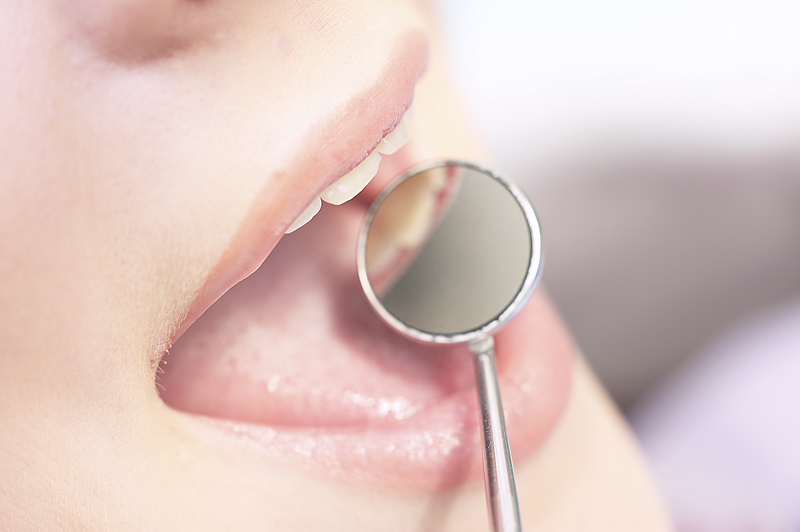 Consider this for a moment, what if this basic hypothesis of modern dentistry is wrong? What if tooth decay isn’t primarily caused by the presence of bacteria, but instead by a degeneration of the tooth enamel caused by nutritional deficiencies?
Consider this for a moment, what if this basic hypothesis of modern dentistry is wrong? What if tooth decay isn’t primarily caused by the presence of bacteria, but instead by a degeneration of the tooth enamel caused by nutritional deficiencies?
That was the belief of Dr. Weston Price, who was appointed as the first director of the National Dental Association, which would later become the American Dental Association. Price’s opinions about what causes tooth decay were radically different than what the ADA teaches American citizens today.
Dr. Price spent many years traveling the world seeking out native people who were resistant and even immune to tooth decay. He found that indigenous people living on traditional diets had bacteria in their mouth, but did not get tooth decay until they were exposed to modern refined foods. His conclusion was that, “Tooth decay in not only unnecessary, but an indication of our divergence from Nature’s fundamental laws of life and health.”
He discovered that changes in our diet, moving away from grass fed meat and dairy, fish, whole grains and vegetables to refined sugars and flours, processed vegetable oils and canned foods was the root of dental problems, not just cavities, but impacted wisdom teeth, improperly formed bites, displaced teeth requiring orthodontic work and gum disease. Dr. Price also observed that good dental health went along with good physical and mental health. The bottom line is that improved nutrition, not better cleaning of the teeth and gums, is the ultimate answer to our modern dental problems.
Therefore it’s not so much that we need to be brushing our teeth all the time but we need to eat foods that will be nutritious and help strengthen our teeth and gums instead of feeding germs that will develop plaque and gum disease. So what is the proper nutrition that our pearly whites need and how do we get it? Read on and find out.
Natural Care for Teeth and Gums
 If you want healthy teeth, you should begin by adopting a healthy diet. As Dr. Weston Price discovered, tooth decay, gum disease, impacted wisdom teeth and other dental problems are all indications of a lack of necessary nutrients in one’s diet.
If you want healthy teeth, you should begin by adopting a healthy diet. As Dr. Weston Price discovered, tooth decay, gum disease, impacted wisdom teeth and other dental problems are all indications of a lack of necessary nutrients in one’s diet.
Dr. Price found that indigenous groups with the highest immunity to tooth decay ate at least two of the following three kinds of food daily: dairy products from grass fed animals, fish and shellfish and the organ meats of land animals. What these foods all have in common is that they are very high in good fats and fat soluble vitamins.
Dr. Price found that on average, traditional diets had ten times more fat soluble vitamins than modern diets. He also noted they had four times more water soluble vitamins and three to four times more calcium and phosphorus. Remember that this was in the 1930s and people’s diets are much worse today.
 To build healthy bodies, including healthy bones and teeth, Dr. Price recommended supplementing the diet with 1/4 teaspoon of cod liver oil and 1/4 teaspoon of high vitamin butter oil 2-3 times daily with a meal. Today these nutrients can be supplemented by taking fish liver oil, vitamin D3 and eating butter from grass-fed cows. Vitamin A&D might be helpful for some people, too. In fact, foods that are high in natural fats and fat soluble vitamins are good for your overall health, including your bones and teeth.
To build healthy bodies, including healthy bones and teeth, Dr. Price recommended supplementing the diet with 1/4 teaspoon of cod liver oil and 1/4 teaspoon of high vitamin butter oil 2-3 times daily with a meal. Today these nutrients can be supplemented by taking fish liver oil, vitamin D3 and eating butter from grass-fed cows. Vitamin A&D might be helpful for some people, too. In fact, foods that are high in natural fats and fat soluble vitamins are good for your overall health, including your bones and teeth.
Dr. Price also recommended liberal consumption of organ meats from wild or grass fed animals. These can be difficult foods to find, but organ meats (if you can find them) are generally cheaper cuts of meat and a great way to save money in today’s economy. My wife and I once had a butcher make ground beef that was half ground heart. It was very good. Liver from organic animals is also very healthy.
Other dietary recommendations included eating whole grains that had been soaked before cooking, liberal consumption of green vegetables and sea foods and the preparation of homemade stock. Stock is made by simmering bones, vegetables and meat scraps, which extracts minerals and other nutrients needed for healthy bones, teeth and bodies. Directions can be found on this website (see related links at the end of this article).
It should go without saying that we should avoid refined sugar, white flour, processed vegetable oils, canned and frozen convenience foods and fast foods in favor of whole, natural meats, grains, vegetables and fruits. For more information on Dr. Price’s dietary recommendations and discoveries, get the book Nourishing Traditions by Sally Fallon. It provides nutritional information and recipes based on indigenous diets.
Supplements for Healthier Teeth
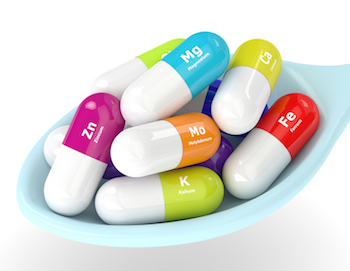 It’s much harder to find healthy food today than it was in 1930. So, it’s more important than ever that we supplement our diets to provide the extra nutrients we need. We’ve already mentioned Dr. Price’s recommendations on taking fat supplements for fat soluble vitamins and co-factors, but we should stress that if you don’t get daily exposure to natural sunlight, you should consider supplementing your diet with vitamin D3. This vitamin is essential for the bones and teeth to store minerals.
It’s much harder to find healthy food today than it was in 1930. So, it’s more important than ever that we supplement our diets to provide the extra nutrients we need. We’ve already mentioned Dr. Price’s recommendations on taking fat supplements for fat soluble vitamins and co-factors, but we should stress that if you don’t get daily exposure to natural sunlight, you should consider supplementing your diet with vitamin D3. This vitamin is essential for the bones and teeth to store minerals.
Besides supplementing with fats and fat soluble vitamins, it is also essential to supplement with minerals. Even the best diets are missing important minerals for healthy teeth and bodies. A good supplement that will provide macro minerals like calcium, phosphorus and magnesium for healthy teeth is Skeletal Strength, but it may be even more important to supplement the diet with trace minerals, which are even lower in modern diets.
Colloidal minerals are a great way to supplement trace minerals. There are many good colloidal mineral products on the market. Even better, though, is an herbal minerals formula. A reasonably good one is HSN-W, which provides calcium, silica and other nutrients for healthy hair, skin and fingernails, as well as bones, teeth, connective tissue and nerves.
Even better is to make a batch of a formula called Herbal Minerals. The directions are in the Modern Herbal Dispensatory by Thomas Easley and myself. I have two stories to tell about this formula. First, one of my sons was seven and still had all of his baby teeth. We took him to the dentist and he said the adult teeth were forming but hadn’t started dropping into place. I decided the boy must be deficient in trace minerals. I gave him some of the Herbal Minerals formula every day and within six weeks he had lost six baby teeth. Two adult teeth were fully in and two more partially in.
Another lady had a twelve-year-old son who the dentist said needed braces for her front teeth. She decided to give him Herbal Minerals and cod liver oil (for Vitamins A&D). Within six weeks one of the teeth had completely straightened on its own and the other crooked tooth had moved half of the way towards its normal position.
These findings suggest that what Weston Price discovered is true. Our rampant tooth decay is a sign of poor nutrition, particularly minerals and fat soluble vitamins. And, remember, that Dr. Price also suggested that overall health was linked to dental health. Along that line I had several families say that as long as they were giving their children the Herbal Minerals formula every day they didn’t get sick.
Natural Dental Hygiene
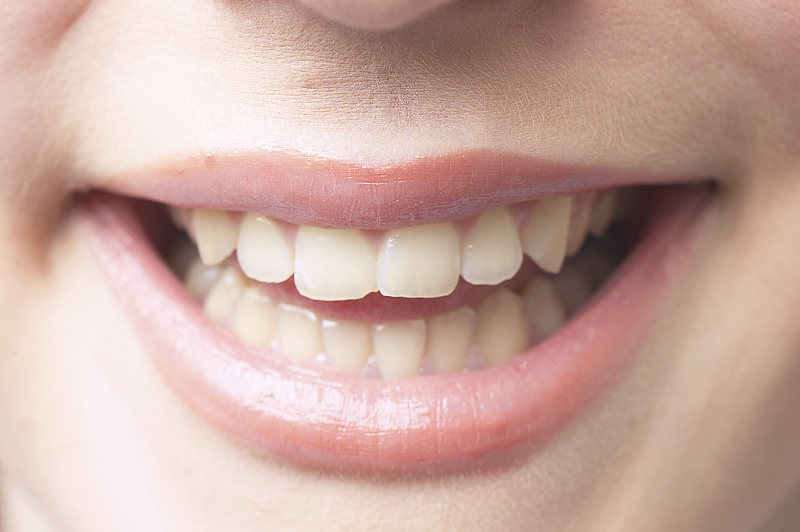 Even though we’ve learned that the real cause of tooth decay is poor nutrition, in our modern world most people are going to want to brush and floss their teeth and practice good dental hygiene, because it’s very tough to get all the nutrients we need to have naturally healthy teeth.
Even though we’ve learned that the real cause of tooth decay is poor nutrition, in our modern world most people are going to want to brush and floss their teeth and practice good dental hygiene, because it’s very tough to get all the nutrients we need to have naturally healthy teeth.
Xylitol is one of our allies in helping to prevent tooth decay and gum disease. Xylitol is a safe alternative to sugar that has roughly the same sweetness as sugar. Unlike some other sugar substitutes like aspartame or sucralose, xylitol has a good track record for safe use. Its use is safe for both hypoglcemics and diabetics because xylitol’s rating on the glycemic index is a mere 7, compared to sugar’s glycemic index score of 100.
Using xylitol candy and gum has been shown to reduce tooth decay because the cavity causing bacteria that thrive on sugar can’t survive on xylitol. Although it is a refined product itself, xylitol helps reduce sugar cravings, too. The use of Xylitol Mouthwash will also help prevent cavities and gum disease. When I use my Xylitol Mouthwash daily I have less problem with my gums, but I often get into bad habits and forget to use it.
Two great herbal remedies for stronger and healthier teeth are black walnut and white oak bark. By opening an equal number of capsules of each herb and mixing them together, you can make a great tooth powder for promoting dental health. Both black walnut and white oak bark have a anti cavity and antimicrobial properties and have been used to treat gingivitis, bleeding gums and loose teeth. White oak bark can strengthen tooth enamel and has been used to help small cavities heal. There is another recipe for herbal tooth powder in Modern Herbal Dispensatory.
To use tooth powder, simply moisten your toothbrush and dip it in the powder. Brush the powder on your teeth, leave it on for a few minutes and rinse. It is all right to swallow because the herb powders are good for internal use, too. Use a separate toothbrush from the one you use for your toothpaste, as this powder stains the toothbrush. (It won’t stain your teeth, however, it will make them whiter.)
Gum Disease and Heart Disease
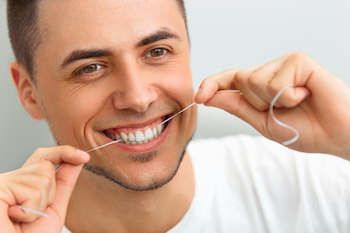 The American Academy of Periodontology has long been concerned with the connection between gum disease and heart disease. Studies have shown that some of the bacteria present in gum disease may cause blood clots that contribute to heart disease. Earlier this year German scientists even discovered and confirmed genetic links in patients that suffered from periodontitis (gum disease) and coronary heart disease. Inflammation of the gums is a sign that you may have inflammation in your arteries, too.
The American Academy of Periodontology has long been concerned with the connection between gum disease and heart disease. Studies have shown that some of the bacteria present in gum disease may cause blood clots that contribute to heart disease. Earlier this year German scientists even discovered and confirmed genetic links in patients that suffered from periodontitis (gum disease) and coronary heart disease. Inflammation of the gums is a sign that you may have inflammation in your arteries, too.
Increasing dietary intake of antioxidant nutrients, by eating more fresh fruits and vegetables and taking anti-inflammatory supplements can help both gum disease and arterial inflammation, which leads to high blood pressure and heart disease. Vitamin C is helpful. It reduces inflammation and promotes greater tissue integrity. Also helpful is Co-Q10, which has studies to show it reduces gum inflammation and one’s risk of heart disease.
Modern dentistry is a major source of two kinds of chemical toxicity that can be ruinous to our health, fluoride and mercury and other heavy metals. Here’s the scoop on how to avoid these serious health hazards.
Fluoride Fables and Fluoride Facts
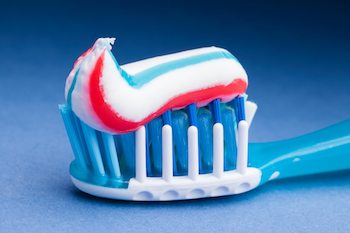 Fluoride became popular in the late 1940s as a way of strengthening two enamel and preventing decay. The belief that fluoride could aid dental health was based on falsified and misleading test results. An experiment was done in two cities. One city’s water was fluoridated and the other was not. During the five-year experiment both cities saw a decrease in tooth decay by 65%, but the results in the control (non-fluoridated) city were never reported.
Fluoride became popular in the late 1940s as a way of strengthening two enamel and preventing decay. The belief that fluoride could aid dental health was based on falsified and misleading test results. An experiment was done in two cities. One city’s water was fluoridated and the other was not. During the five-year experiment both cities saw a decrease in tooth decay by 65%, but the results in the control (non-fluoridated) city were never reported.
Fluoride is a toxin that displaces iodine in the body, which can depress thyroid function and contribute to problems with the breasts, uterus, prostate, skin and bones. Fluoride is actually harmful for your teeth and causes fluorosis, which leads to discoloration, pits and crevices, and overall weaker teeth. It can weaken bones, too, contributing to the development of osteoporosis.
Fluoride is carcinogenic and depresses testosterone production in men. It weakens willpower and makes people more docile and submissive. Worst of all, fluoride is a deadly toxin. It is used as an insecticide and rodentcide, but it can kill people, too. There is enough fluoride in one tube of fluoridated toothpaste to kill a small child and children have died from swallowing fluoride treatments in dental offices!
In 1990 Dr. William Marcus blew the whistle on fluoride, exposing its connection with higher cancer rates, birth defects, and osteoporosis. Dr. Marcus was the senior toxicologist in the Office of Drinking Water at the EPA and was consequently fired for trying to make his findings about fluoride known and was only rehired after suing the EPA.
Unfortunately, the America Dental Association (ADA) is still teaching Americans through their support of toothpaste adds on TV that fluoride is good for your teeth. It’s not. It is true that fluoride in your toothpaste can kill bacteria that may cause tooth decay, but there are far better ways of maintaining mouth hygiene.
To protect yourself from fluoride purify your drinking water at the tap (bottled water may be fluoridated), buy dental products without fluoride and reject fluoride treatments at the dentist’s office. You can also help to detoxify your body to get rid of any fluoride to which you may have already been exposed. This can be done by dramatically upping your intake of iodine. Iodine has been clinically shown to increase urinary flushing of fluoride sodium fluoride. To flush calcium fluoride use iodine with extra calcium. Liquid dulse or seaweeds like kelp are good sources of iodine, but you may need something stronger like Iodoral or Lugol’s solution if you’ve had serious exposure.
Mercury Myths and Heavy Metal Mayhem
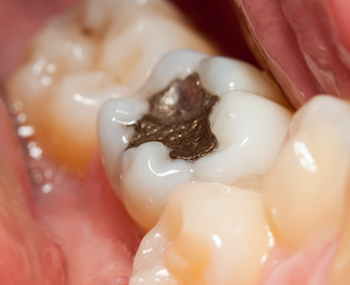 Amalgam, a mixture of mercury, silver and other heavy metals, was introduced into dentistry in 1833. At the time many dentists were against the idea of inserting toxic metal into their patients mouths. Doctors and patients were reassured that the mercury in amalgams was stabilized so it would not harm the body.
Amalgam, a mixture of mercury, silver and other heavy metals, was introduced into dentistry in 1833. At the time many dentists were against the idea of inserting toxic metal into their patients mouths. Doctors and patients were reassured that the mercury in amalgams was stabilized so it would not harm the body.
Almost a hundred years later, the debate once again arose because Dr. Alfred Stock showed that mercury vapor did leech from amalgam. Finally in 1986, the ADA admitted that mercury was leeching into the body, but maintained that it was not happening in large enough amounts to be harmful. Even today, dentists are told not to recommend the removal of these amalgam fillings for health reasons and dentists who do so can be considered unethical.
Fluorescent light bulbs only contain 22 milligrams of mercury and have been dubbed as hazardous waste, while the average amalgam filing has close to 1,000 milligrams of mercury. If a dentist drops amalgam on the floor, he is required to evacuate the building and call for a hazardous waste deposal (HAZMAT) team. Yet this substance has been put into the mouths of millions of people.
Mercury depresses immune function, making it difficult for the body to fight infections and cancer. It also displaces iodine, lowering thyroid function. Mercury attacks the nervous system and may be involved in sudden infant death syndrome, autism, multiple sclerosis, ADHD and other nervous system problems.
Removal of amalgam fillings, followed by a mercury detoxification program, has helped many people improve their health. A basic mercury detox program is: 1 capsules of Heavy Metal Detox twice daily, 2-4 algin twice daily and 1-2 Super Omega-3 EPA twice daily. Other supplements that may help mercury detox include alpha lipoic acid, N-acetyl-cysteine and Hydrated Bentonite. Taking drawing baths in clay (one cup of Redmond Clay or 1/2 bottle of Hydrated Bentonite per bath) or doing foot spa detox baths once per week will also help with mercury detox.
